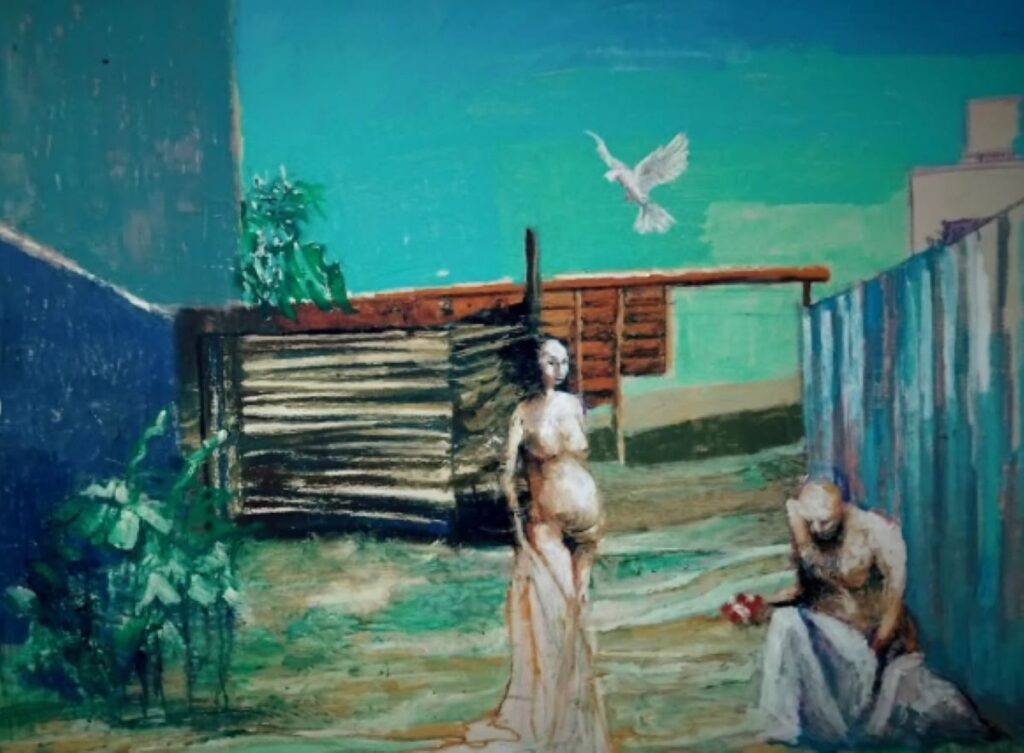Ahead of his new exhibition Horti Inculti at Gemelli Art Gallery in Ta’ Qali, Times2 talked to artist Jon Grech about the works on show and the ideas that inspired them.
Tell us about your new show
The exhibition is titled Horti Inculti/Untended Gardens. The phrase is not meant to not be taken literally, although there are various visual references to gardens, vegetation, and natural spaces in several of the works.
Philosophically, the phrase is something of an oxymoron. Gardens are phenomenologically associated with ‘cura’, the Latin word for care, attention, cultivation. Seven years ago, my wife gave me a book by Robert Pogue Harrison that explores this notion in great depth – the garden as a portion of the world pulled into the orbit of human meaning through cura.
This collection explores what happens when that care is withdrawn − or becomes ambiguous. The “untended garden” becomes a metaphor for inner and outer states alike: for histories and bodies, for memories and urban margins, for decaying rituals and abandoned myths.
The figures in these paintings often emerge from hybrid, overgrown or fragmented contexts. There are portraits that seem interrupted or eroded, moments of metamorphosis, fragments of ceremony.
A pig’s mask made of glass, an annunciation scene in an unkempt lot, a head half-subsumed by flowers. Each work suggests a place where the line between cultivation and neglect is blurred.
The overall mood of the show is one of loss and fragility. Many of the works show surfaces are fractured or eroded, held together by lines that thread across contrasting colour fields. Some figures dissolve at the edges, fading into negative space. There is an underlying sense of uncertainty, even fear, about the future − personal, social, environmental.
There is also a quiet insistence on beauty. When I was a teenager, my friends and I discovered an abandoned villa with floral murals peeling off the walls and a vast, overgrown garden. We used to sneak in at night with torches and cheap wine, just to be there. There was a strange tension between the neglected interior and the wild vitality of the garden − between ruin and abundance, faded, redundant order and chaos. I feel that memory lives at the heart of this collection of works.
What inspired this exhibition?
Although it’s not included in this exhibition, the inspiration for Horti Inculti began with a painting I created at the start of last year, titled Miasma. I submitted it to the fifth edition of Ambientarti, a collective exhibition in Milan, where it was selected as one of the standout works. The piece was eventually sold, but it remains a kind of conceptual seed for this show.
Miasma dealt with the erosion of the very idea of “nature” or “garden” as traditionally conceived − especially in its classical or idealised forms. It questioned whether we can still speak of the natural world as something whole, ordered, or separate from decay and contamination. That same tension runs through the works in Horti Inculti, where forms break down, boundaries blur, and beauty is found in states of disarray.
This is the first time you are exhibiting sculpture. Why did you decide to make this move?
Yes, this is the first time I’ve chosen to exhibit sculpture publicly. In the past, I used sculpture more as a preparatory tool − working primarily in plasticine to give form to ideas. My imagination tends to be tactile rather than purely visual, so shaping material with my hands has always helped me think more clearly about figures, gestures, and structure.
Last year, I began to experiment more consciously with the intersection between painting and sculpture − mixing clay and pigment to create low relief wall pieces. This opened new possibilities, and for Horti Inculti, the sculptural pieces actually came first.
When the curator, Ryan Grech, saw them, he suggested they be included in the show too. I agreed − both because I felt the forms could stand on their own and because they shared a strong dialogue with the wall-based works.
Horti Inculti opens on July 18 and runs until July 31.
